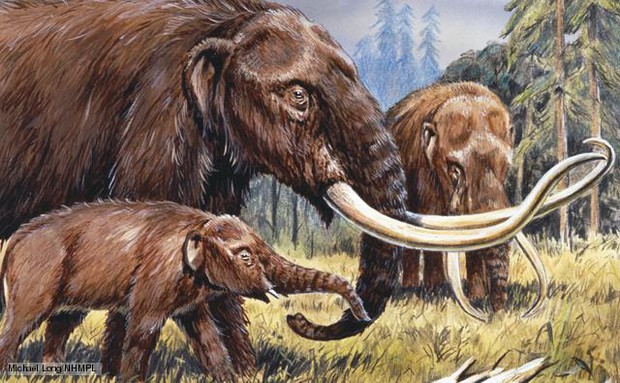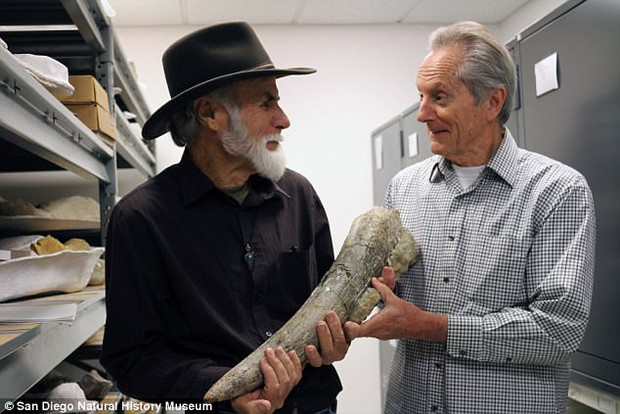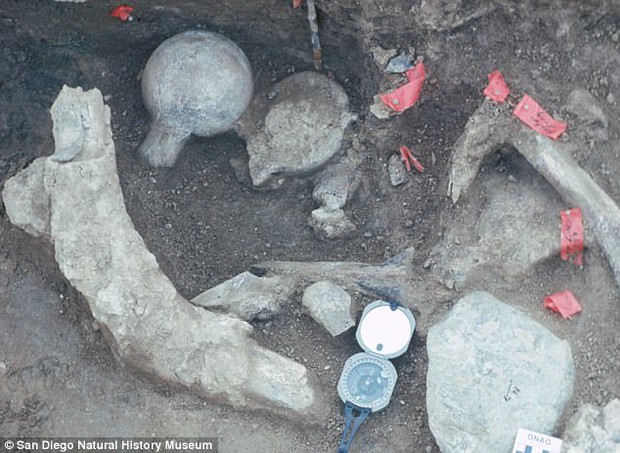Humans have a long history of appearing, but from the beginning we were not present everywhere in this world. We need a lot of time to travel to many different continents, and it has all been recorded by historians after many years of research.
However, recently, a fossil found in San Diego (USA) is at “risk” forcing us to rewrite the history of human migration.

Specifically, experts from the San Diego Natural History Museum found the bones of a mastodon – a species of elephant in the same family as the mammoth.
These bone tubes are 130,000 years old, but there are traces showing that people used rocks to break the bones to absorb nutrients inside. This would not be a problem, if current history did not state that humans only appeared here for at least the next 115,000 years.

Mastodon – an elephant in the same family as mammoth living in North America
According to current history, at that time, Homo sapiens (our modern human race) were still in Africa. Therefore, experts believe that the mastodon hunters belonged to an unknown lineage.
These people could have been Homo erectus, Neanderthals or Denisovans. The “Hobbit” The recently discovered Homo floresiensis was initially a candidate, but this possibility was later rejected.
How humans colonized this continent is a very difficult question to answer. According to experts, there are two possibilities: either they crossed the road connecting East Asia and Alaska, or they crossed 80km by sea to get here.
In fact, mastodon fossils were found in 1992, but it was not until 2011 that new technology allowed us to accurately predict the age of these bone tubes. And it wasn’t until 2017 that experts published the research.
“It took 22 years to put the pieces together. And now the picture it brings can change everything” – Steve Holen from the Denver Museum of Natural Sciences.
The journey to find great fossils
When they first discovered the fossil, experts from the museum simply thought it was the body of a mastodon. However, many bone tubes were mysteriously broken. According to Holen, he performed a number of different tests, and came to a very surprising conclusion:
“There is no geographical phenomenon or animal capable of creating such cracks, except for human hammers”.

Furthermore, when examining the rocks surrounding the fossil: “Marks from the surrounding rocks suggest they were used as hammers” – said experts from the museum.
So it can be said that this is a discovery that can change human history. Who are they – the people who invaded North America -? Is it the generation that explored North America very early, but was unsuccessful?

The rocks were often used as hammers
Professor Erella Hovers, an archaeologist at the Hebrew University in Jerusalem, also said that this was a shocking discovery. “This discovery shows that humans appeared in the New World (another name for the Americas) up to 100,000 years earlier than what was known.”.
“But what happened after that? The answer requires more time to collect further evidence” – Hover shares.
The study was published in the journal Nature.